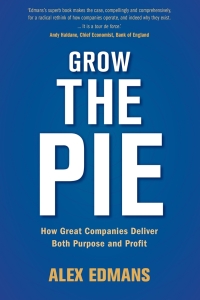Question
2. A company wants to issue N shares through an IPO. The issue price P, to be fixed by the underwriter, will be an imperfect
2. A company wants to issue N shares through an IPO. The issue price P, to be fixed by the underwriter, will be an imperfect estimation of the market value of the company V , which is not known before the IPO. Therefore P = V + , where is a random variable equal to:
= { 0.2 with probability 0.5 / 0.2 with probability 0.5
If > 0 ( < 0) the company will be overvalued (undervalued) at the IPO.
Once the shares start quoting the market price will be equal to V . Therefore, the benefits for the investors who bought shares at the IPO will be equal to V P = .
Imagine 80% of the investors are small investors that can not estimate V , and 20% are institutional investors that estimate the market value of the company to be E = V + , where is a random variable equal to:
= { 0.1 with probability 0.5 / 0.1 with probability 0.5
Of course and are independently distributed.
Assume that by themselves uninformed investors are enough to buy all N shares. Thus, if they are the only ones making an offer they will buy all shares on their own. On the other hand, if both kinds of investors participate the offer is oversubscribed, and the total number of shares will be allocated among the investors according to their proportion.
Lets summarize the information structure available to investors:
Uninformed investors have no idea about how much V is. They know that the underwriter will err in pricing by a stochastic amount , though.
The institutional investor has no idea about V too. He/she will believe that his/her realization of E is a true signal of it, though (but does not know which was the realization of ). Both players only ex-post realize what was the realization of , when the price converges to V.
The uninformed investor knows that the institutional investor receives a signal E and acts on that. So, even if he/she does not know how much V is, he/she knows that in some states of the world (depending on the realizations of and ) the institutional investor will not want to participate.
The uninformed investor, though, can only decide whether to participate or not regardless of any state of the world realization.
a. Which will be the benefit of the informed and uninformed investors if the uninformed investors always buy? Is that a sustainable equilibrium?
b. How would your previous answers change if the underwriters systematically apply a discount of 0,1 to their estimation of true value in order to fix the issue price? [N.B. Try to proceed on a case by case basis (what happens if = 0.2 and = 0.1?), for all possible cases.]
Step by Step Solution
There are 3 Steps involved in it
Step: 1

Get Instant Access to Expert-Tailored Solutions
See step-by-step solutions with expert insights and AI powered tools for academic success
Step: 2

Step: 3

Ace Your Homework with AI
Get the answers you need in no time with our AI-driven, step-by-step assistance
Get Started


